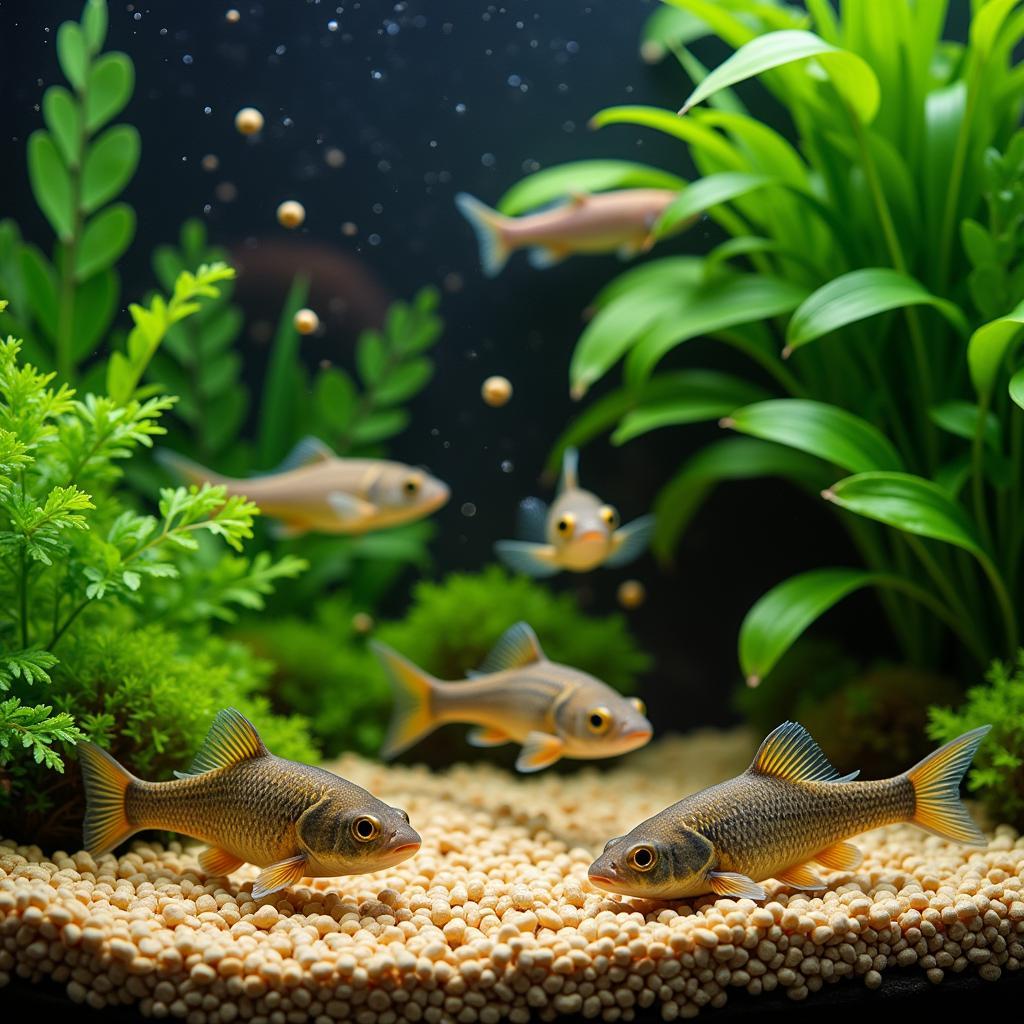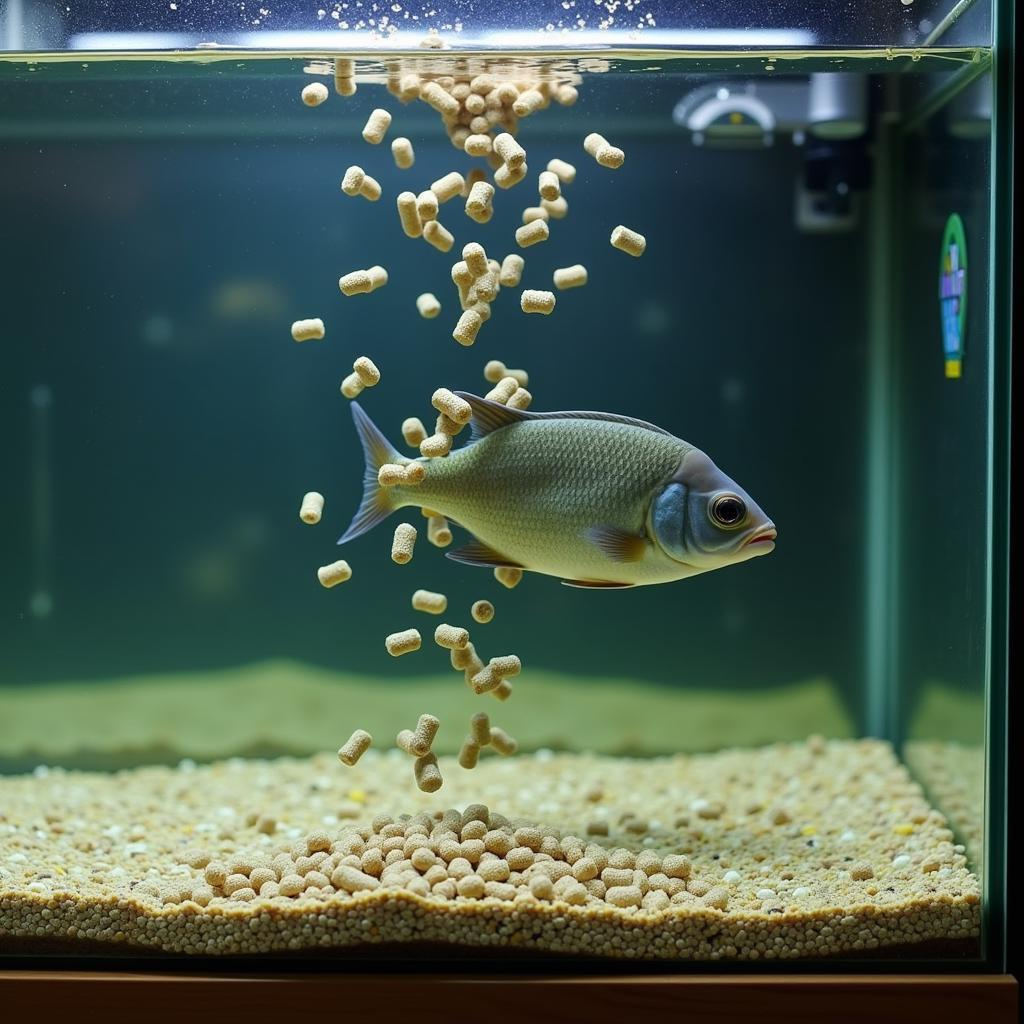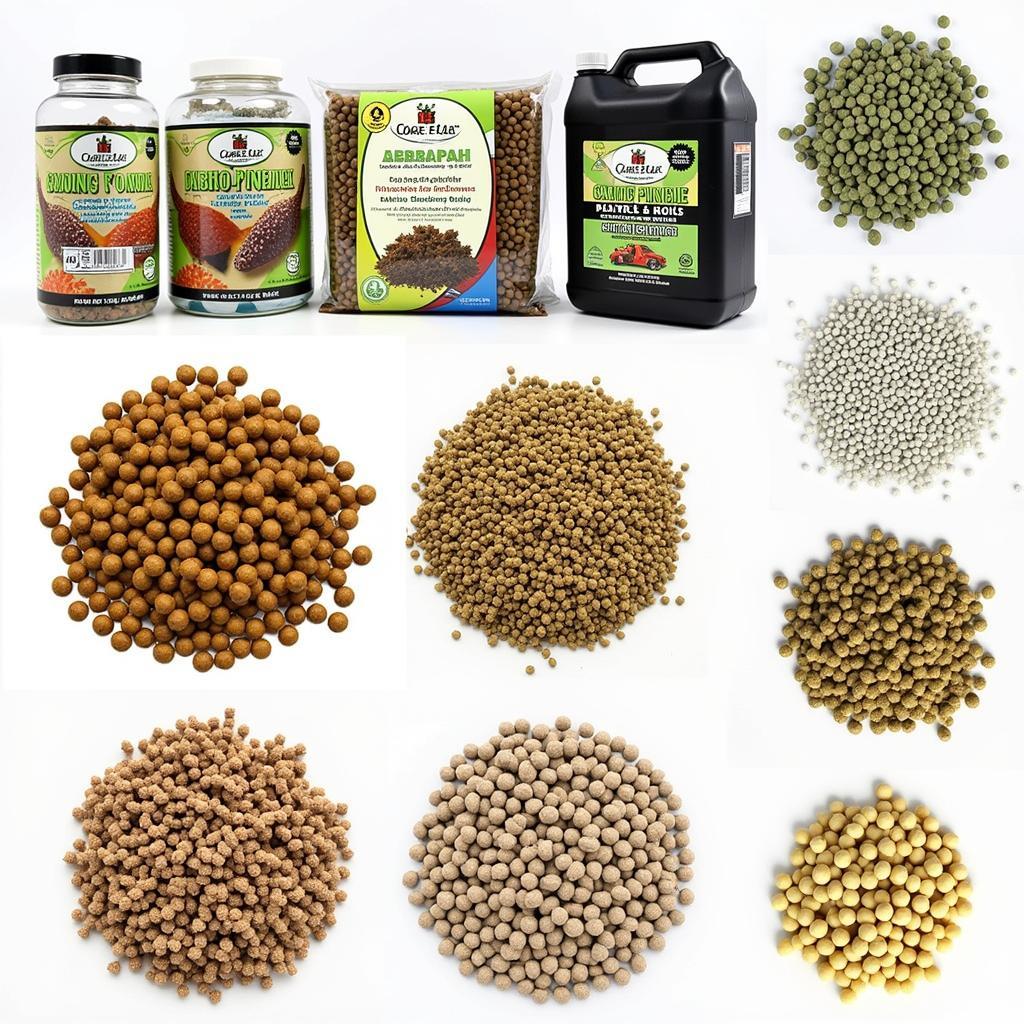Sinking Pellet Fish Food is a popular choice for aquarium enthusiasts, offering a convenient and effective way to provide their aquatic pets with a balanced diet. Unlike floating food, sinking pellets sink to the bottom of the tank, catering to bottom-feeding fish species and ensuring all levels of the aquarium ecosystem benefit from feeding time.
What are Sinking Fish Food Pellets?
Sinking fish food pellets are specifically formulated to sink rapidly upon hitting the water’s surface. This characteristic makes them ideal for fish that naturally feed at lower depths, such as certain catfish, loaches, and invertebrates. The pellets come in various sizes, ingredient compositions, and nutritional profiles, catering to different species’ needs and dietary requirements.
The Benefits of Choosing Sinking Pellets
1. Targeted Feeding for Bottom Dwellers: Sinking pellets cater to the natural feeding habits of bottom-feeding fish species. These fish might struggle to compete for food at the surface and often miss out on floating food entirely. Sinking pellets ensure they receive their share of nutrients without unnecessary stress or competition.
 Bottom Feeder Fish Enjoying Sinking Pellets
Bottom Feeder Fish Enjoying Sinking Pellets
2. Reduced Water Pollution: Compared to floating food, sinking pellets contribute less to water pollution. As the pellets sink immediately, they are less likely to disperse and cloud the water column. This characteristic helps maintain water clarity and reduces the risk of harmful ammonia spikes caused by uneaten food decomposing in the tank.
3. Controlled Feeding and Less Waste: Sinking pellets offer aquarium owners better control over feeding portions. It’s easier to monitor how much food fish consume and adjust the amount accordingly. This controlled feeding leads to less uneaten food, minimizing waste and contributing to a cleaner aquarium environment.
 Aquarium Owner Observing Fish Eating Sinking Pellets
Aquarium Owner Observing Fish Eating Sinking Pellets
4. Nutritional Variety and Enrichment: Sinking pellets are available in a wide range of formulations to meet specific dietary needs. From high-protein pellets for carnivorous species to algae-based options for herbivores, you can find a sinking pellet tailored to your fish’s nutritional requirements. Some brands also offer sinking pellets infused with vitamins, minerals, and color-enhancing ingredients.
Choosing the Right Sinking Pellet Fish Food
1. Consider Your Fish Species: The primary factor influencing your choice should be the dietary needs of your fish. Research the specific species in your aquarium and identify their preferred food sources. For instance, carnivorous fish like certain cichlids require a higher protein intake than herbivorous species.
2. Pellet Size Matters: Select a pellet size appropriate for your fish’s mouth. If the pellets are too large, your fish might struggle to consume them, leading to unnecessary stress and potential digestive issues. Conversely, extremely small pellets might not provide enough sustenance, especially for larger fish.
3. Ingredient Quality and Composition: Examine the ingredient list carefully, prioritizing high-quality protein sources, healthy fats, and essential vitamins and minerals. Avoid pellets with excessive fillers, artificial colors, and preservatives, as these can negatively impact your fish’s health and water quality.
4. Experiment and Observe: It might take some trial and error to find the perfect sinking pellet for your fish. Introduce new foods gradually and observe your fish’s response. Look for signs of enthusiasm during feeding time, healthy growth, and vibrant coloration.
 Variety of Sinking Pellet Fish Food
Variety of Sinking Pellet Fish Food
Tips for Using Sinking Pellet Fish Food
- Soak Before Feeding: Soaking sinking pellets in aquarium water for a few minutes before feeding can soften them, making them easier for your fish to consume and digest.
- Distribute Evenly: Distribute the pellets evenly across the tank’s bottom to avoid overcrowding and ensure all fish have access to food.
- Monitor Consumption: Observe your fish during feeding time and remove any uneaten pellets within a reasonable timeframe (typically within a few hours) to prevent water quality issues.
- Store Properly: Keep your sinking pellet fish food in a cool, dry place to maintain its freshness and nutritional value. Avoid storing it in direct sunlight or humid environments.
Sinking pellet fish food offers a practical and beneficial feeding solution for a wide range of aquarium fish, especially those that naturally inhabit the lower levels of their aquatic environment. By understanding the advantages, selecting the right type for your fish, and following proper feeding practices, you can contribute significantly to their health, well-being, and overall enjoyment of their aquarium habitat.
If you’re looking for alternative options for your aquatic pets, you can explore our range of pond goldfish food and catfish floating food. We also have resources on how long certain species can go without food, such as how long can african dwarf frogs go without food, to ensure you provide optimal care for your aquatic companions.
Frequently Asked Questions about Sinking Pellet Fish Food
1. Can I feed sinking pellets to all types of fish?
While sinking pellets are suitable for many fish species, they are particularly beneficial for bottom feeders. Some surface-dwelling fish might ignore sinking pellets altogether. It’s crucial to research your fish species and their specific dietary needs.
2. How often should I feed sinking pellets to my fish?
The frequency of feeding depends on factors like your fish species, age, activity level, and the type of sinking pellet you choose. Generally, feeding once or twice daily is a good starting point. Observe your fish’s behavior and adjust the frequency accordingly.
3. Can I mix sinking pellets with other types of fish food?
Yes, you can offer a varied diet to your fish by supplementing sinking pellets with other food sources like flakes, live or frozen foods, and vegetables. However, always research the compatibility of different foods and ensure your fish receive a balanced nutritional intake.
4. How can I prevent sinking pellets from clouding my aquarium water?
To minimize water clouding, remove uneaten pellets promptly. Additionally, choose high-quality pellets that don’t easily disintegrate in water.
5. My fish are ignoring the sinking pellets. What should I do?
If your fish are not accustomed to sinking pellets, they might take some time to accept them. Try soaking the pellets before feeding to soften them and release their aroma. You can also try a different brand or formula. If the issue persists, consult with a veterinarian or aquatic specialist to rule out any underlying health concerns.
For smaller fish species, consider our range of fish food small pellets or explore the nutritional benefits of wheat germ koi food for your pond fish.
Remember, providing the right nutrition is essential for your aquatic pets’ health and happiness. By making informed choices about sinking pellet fish food and adhering to responsible feeding practices, you can create a thriving and enjoyable environment for your fish to flourish.
If you have any questions or require further assistance, don’t hesitate to reach out. Contact us at Phone Number: 02437655121, Email: minacones@gmail.com Or visit us at: 3PGH+8R9, ĐT70A, thôn Trung, Bắc Từ Liêm, Hà Nội, Việt Nam. Our dedicated customer support team is available 24/7 to assist you.